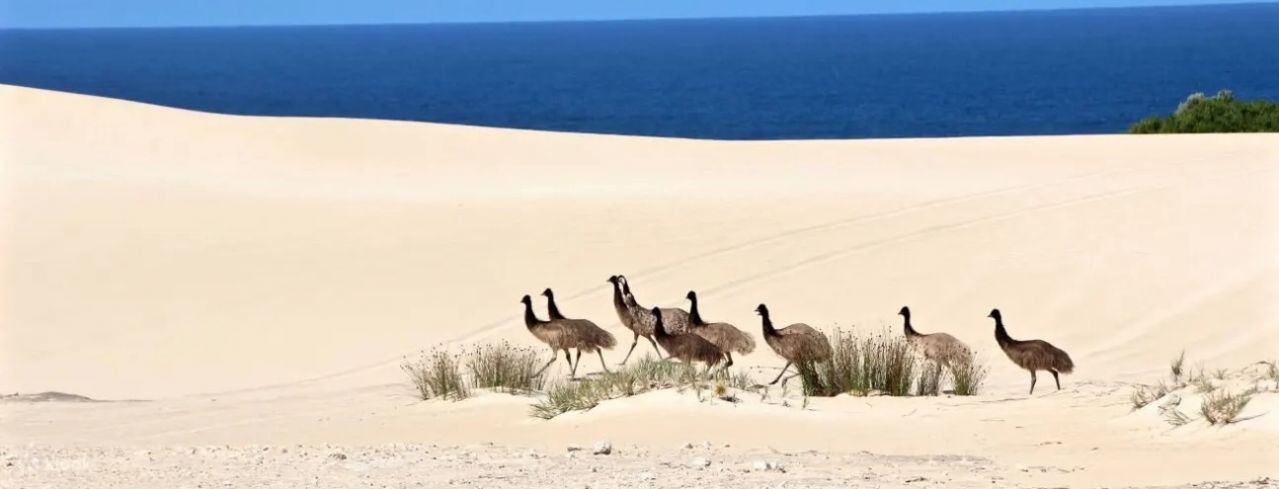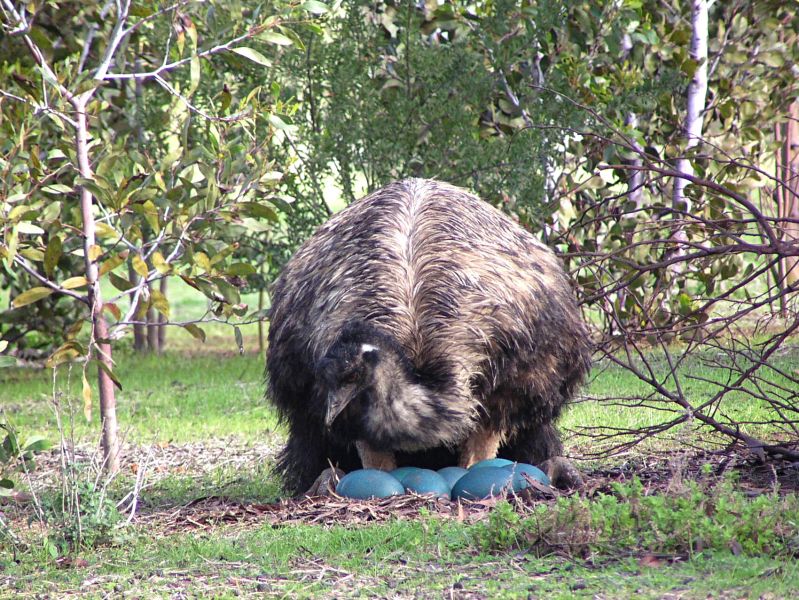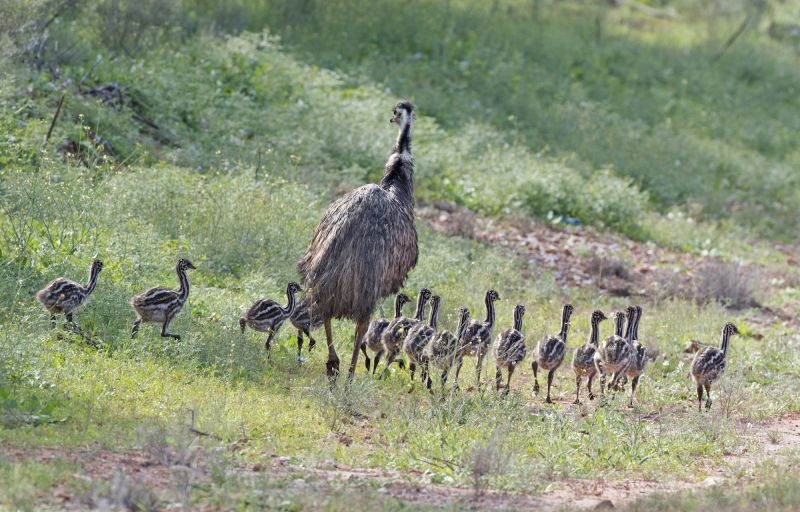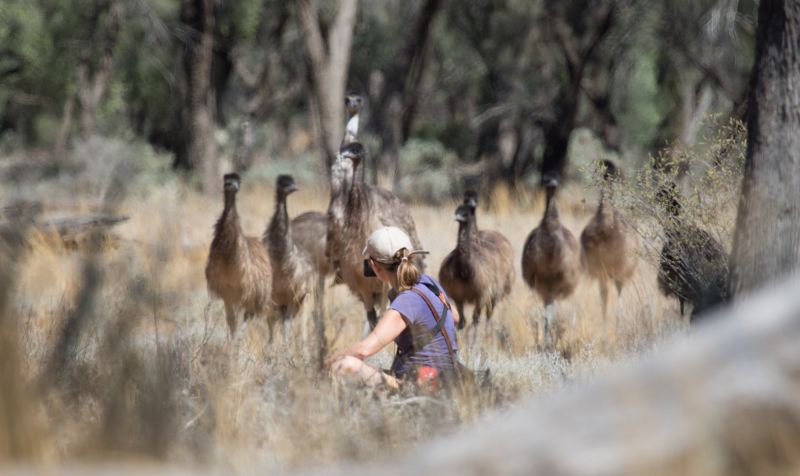The Emu (Dromaius novaehollandiae) is Australia's largest bird and one of the most iconic symbols of the country's unique wildlife. Flightless and towering in stature, this fascinating species roams the open landscapes of Australia, from grasslands and savannahs to eucalyptus forests and semi-arid scrublands. They are found across most of the continent, except for most islands including Tasmania.
What is a ratite?
Ratites are a group of large, flightless birds characterized by their flat breastbone without the keel that anchors flight muscles. This family includes the Emu, Ostrich, Cassowary, and Kiwi, all adapted to terrestrial living with strong legs built for running.
Size and appearance
Emus can reach a height of up to 2 meters (6.5 feet), with males and females similar in size. Weighing between 30 to 45 kilograms, they are covered in soft, shaggy plumage that ranges in shades of brown to grey-brown, providing excellent camouflage in their natural habitat. They often have a patch of bare, blueish skin behind their eyes running down their neck. Their long legs and three-toed feet allow them to run at speeds of up to 50 km/h when escaping predators.
Emu diet
Omnivorous by nature, Emus feed on a variety of seeds, flowers, fruits, shoots from native plants, and insects. Their diet adapts to seasonal availability, and they are known to travel long distances to find food and water. In Western Australia, Emus are known to migrate seasonally - south in search of winter rains, and north in search of tropical summer rains. These birds also play a vital role in seed dispersal, contributing to the health of ecosystems.
Breeding
Emus have a unique breeding system where males take on the primary role of incubating eggs and raising chicks. During the breeding season (May–September), males will build a nest on the ground, ready for the larger and more dominant females to lay clutches of up to 15 large blue eggs. The female will leave the male to incubate the eggs for about up to nine weeks, often without eating or drinking much. Within a few days of hatching, chicks are active and begin feeding themselves. During the first 6 months, the male will become more aggressive and protective over his young. They will stay with the male for the next 12-18 months, learning critical survival skills, before becoming completely independent.

Where to see Emus in the wild
Quick fact
Emus are excellent swimmers and will cross rivers or wetlands when travelling!
For a chance to encounter Emus in their natural habitat, try one of these regions:
Eyre Peninsula, South Australia
With its diverse landscapes and abundant wildlife, the Eyre Peninsula is an Emu haven. Australian Coastal Safaris provides multi-day tours that explore the region's key Emu habitats, where sightings of these iconic birds are a regular highlight.
Mungo National Park, New South Wales
Echidna Walkabout Nature Tours offers guided journeys through the breathtaking landscapes of Mungo National Park, located in south-west New South Wales. This area's open plains and semi-arid conditions provide an ideal setting for spotting Emus while uncovering the park's rich Indigenous heritage and ancient geological wonders.
Riverland, South Australia
The Riverland region, nestled along the Murray River, is a prime habitat for Emus. Here, they thrive in both arid plains and lush riverine environments. Guided by Murray River Trails, visitors can immerse themselves in this vibrant ecosystem and observe Emus alongside other unique native wildlife.
Cairns, Queensland
While Cairns' Daintree Rainforest and Atherton Tablelands aren't typical Emu habitats, FNQ Nature Tours ventures inland to the savannah woodlands. This unique ecosystem offers excellent opportunities to encounter Emus in their natural surroundings.
Sydney (Southern Highlands), New South Wales
Located just 90 minutes from Sydney, the Southern Highlands is a picturesque region where rolling hills and open woodlands create ideal habitats for Emus. With Sydney Bespoke Tours, you can embark on personalized journeys to explore this serene countryside, discovering the local flora, fauna, and the occasional sighting of these majestic flightless birds in their natural environment.

Featured Tour: Port Lincoln Wildlife Encounters
Operator: Australian Coastal Safaris
Duration: 2 days
This incredible two-day adventure combines the best terrestrial and marine protected areas across the region including Lincoln National Park, Coffin Bay National Park, Big Swamp, Mikkira Station and Mount Dutton Bay Conservation Park.
Featured Tour: Private Mungo Outback Journey
Operator: Echidna Walkabout Nature Tours
Duration: 4 days
Be captivated by the expansive red sand plains and dunes, riverine ecosystems of the famous Murray and Darling Rivers and the arid land ecosystems around Lake Mungo. Spot Red Kangaroos, Western Grey Kangaroos, Emus, Pink Cockatoos, several parrot species including Mulga, Red-rumped, Mallee Ringnecks and Blue-bonnets, raptor birds including the Wedge-tailed Eagle and several species of lizard basking in the sun.
Featured Tour: Murray River Safari
Operator: Murray River Trails
Duration: 4 days
Experience the diverse wildlife offerings where Australia's river oasis meets the outback. This multi-activity wildlife safari along Australia's greatest river includes guided walks, canoeing, an outback drive and open back cruising, combined with luxurious houseboat accommodation and superb dining including local wines. Spot Koalas, Red Kangaroos, Emus, Western Grey Kangaroos, Australian Pelicans, Royal Spoonbills, Black Swans and Darters from the comfort of a private pontoon cruiser.
Featured Tour: 5 Day Birdwatching North Queensland
Operator: FNQ Nature Tours
Duration: 5 days
This World Heritage Listed area is the world's oldest continually surviving rainforest and where the world's songbirds emerged. With more than 450 Avian Species recorded (more than half of Australia's total bird count), including 12 Endemics, it's Australia's twitching mecca!
Featured Tour: Sydney Wildlife Safari
Operator: Sydney Bespoke Tours
Duration: 1 day
Venture to the pristine bushland of the Southern Highlands, just 90 minutes from Sydney, to observe several of Australia's most iconic species in the afternoon and evening. With the help of a knowledgeable and passionate naturalist guide, you will have the chance to spot Eastern Grey Kangaroos, Emus, wallabies, cockatoos, rosellas, kookaburras, Superb Lyrebirds and the elusive Platypus.

FAQs
Why can't Emus fly?
While Emus are birds and possess small wings, they have lost the ability to fly. It is believed they evolved from flying ancestors that lived on islands without terrestrial predators, where the need for flight as a means of escape was unnecessary.
How long do Emus live?
In the wild, Emus typically live around 15-25 years.
Do Emus migrate?
Emus are nomadic and can travel hundreds of kilometres to find food and water, especially during dry seasons.

